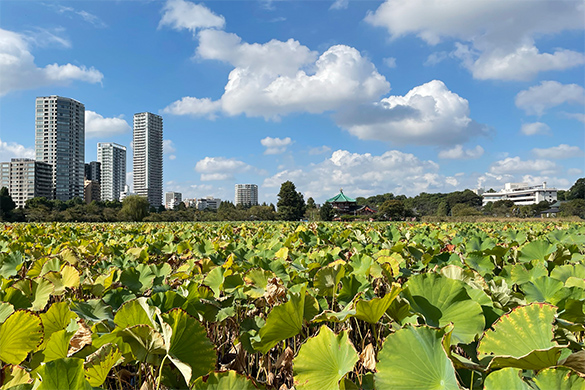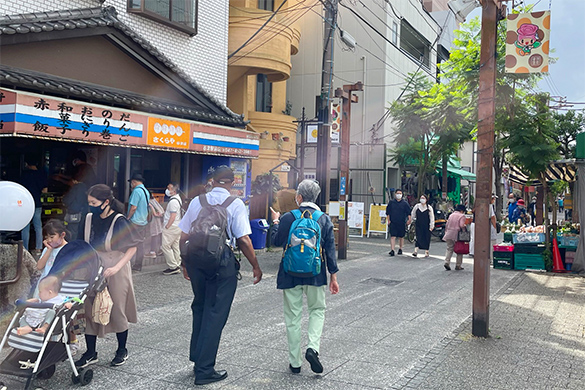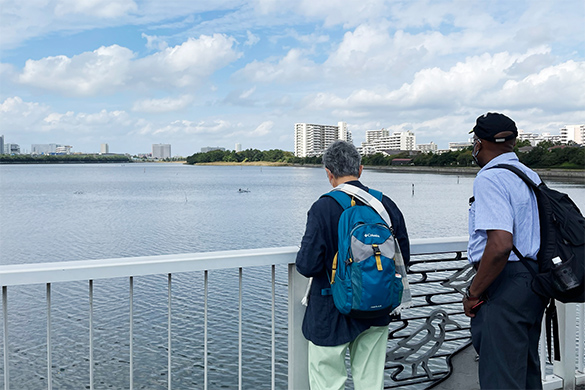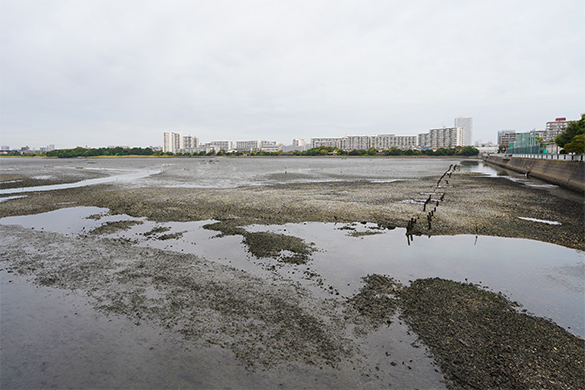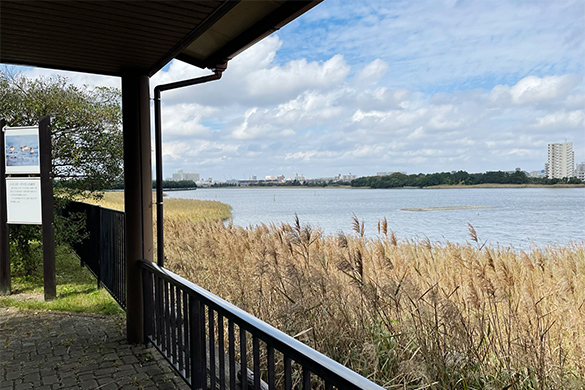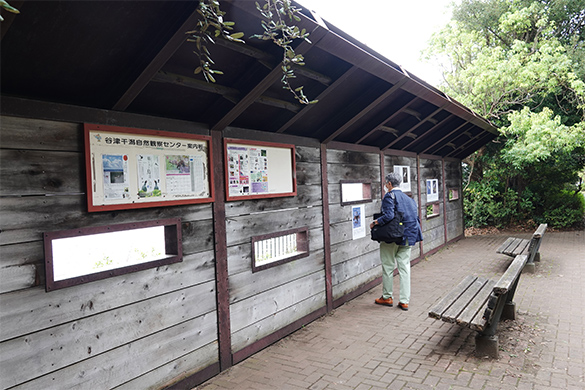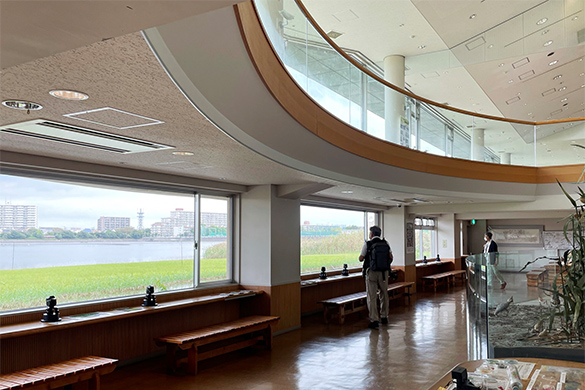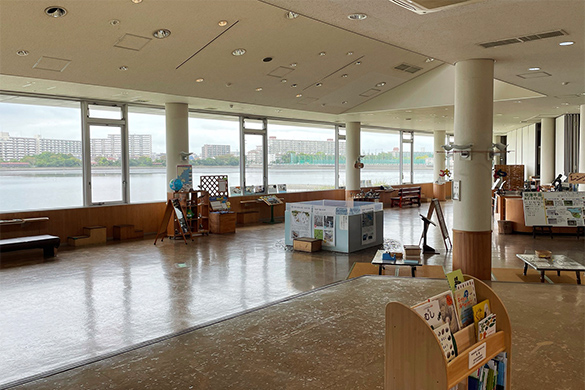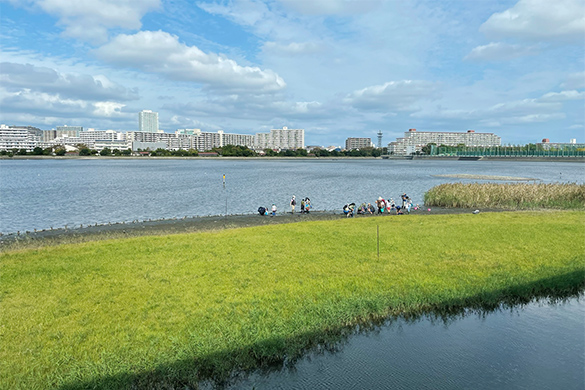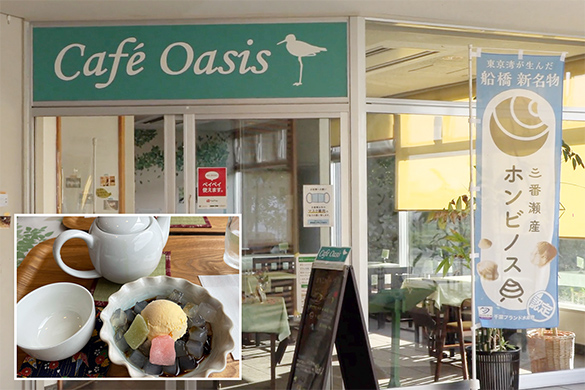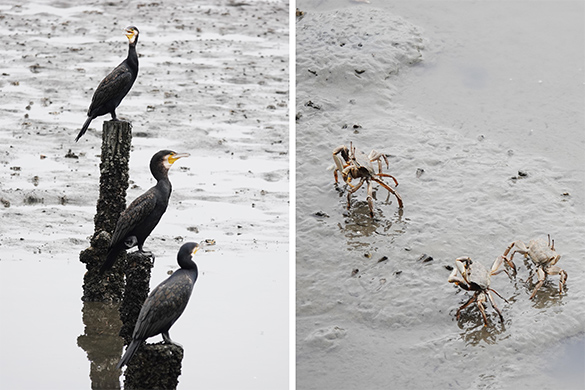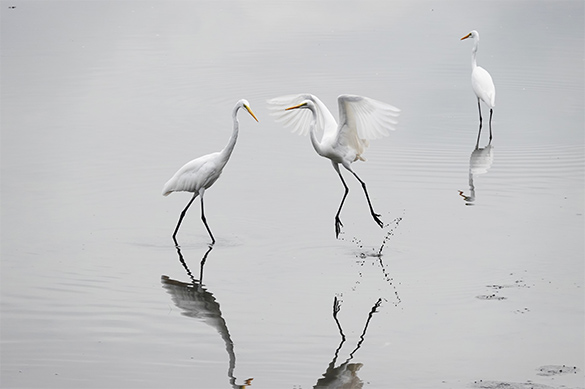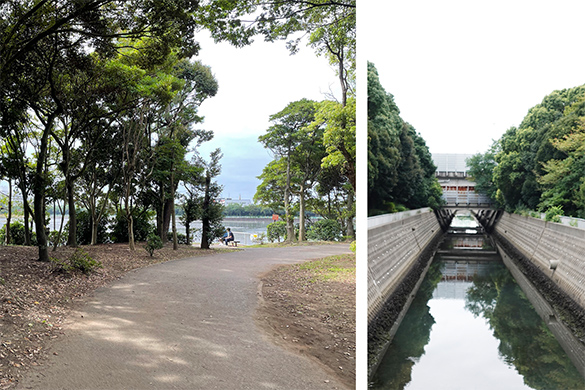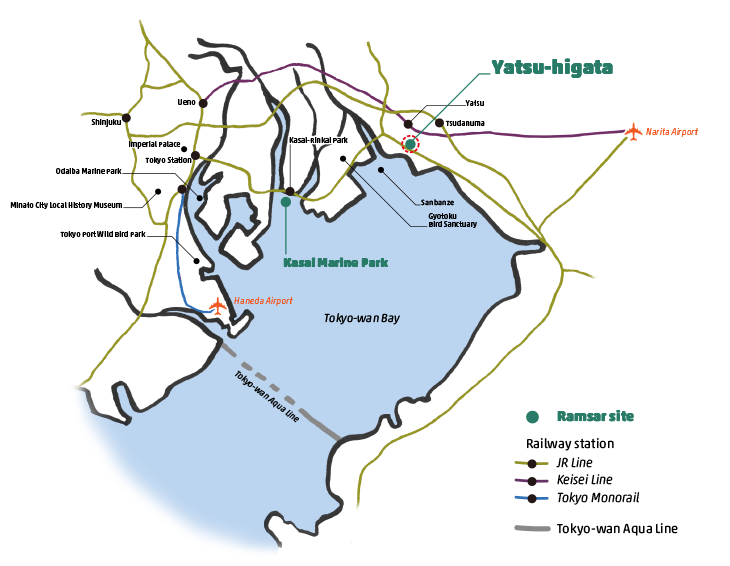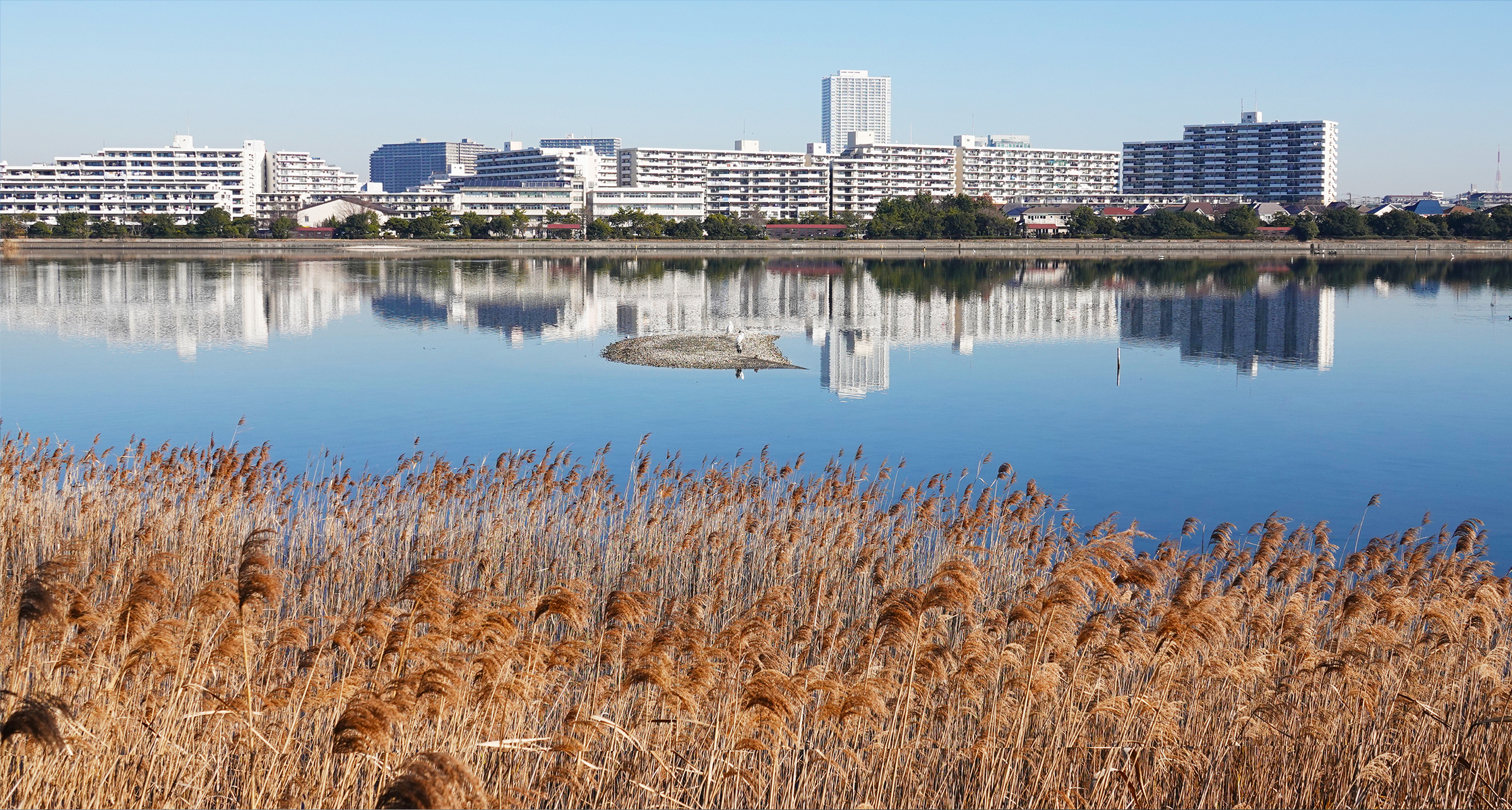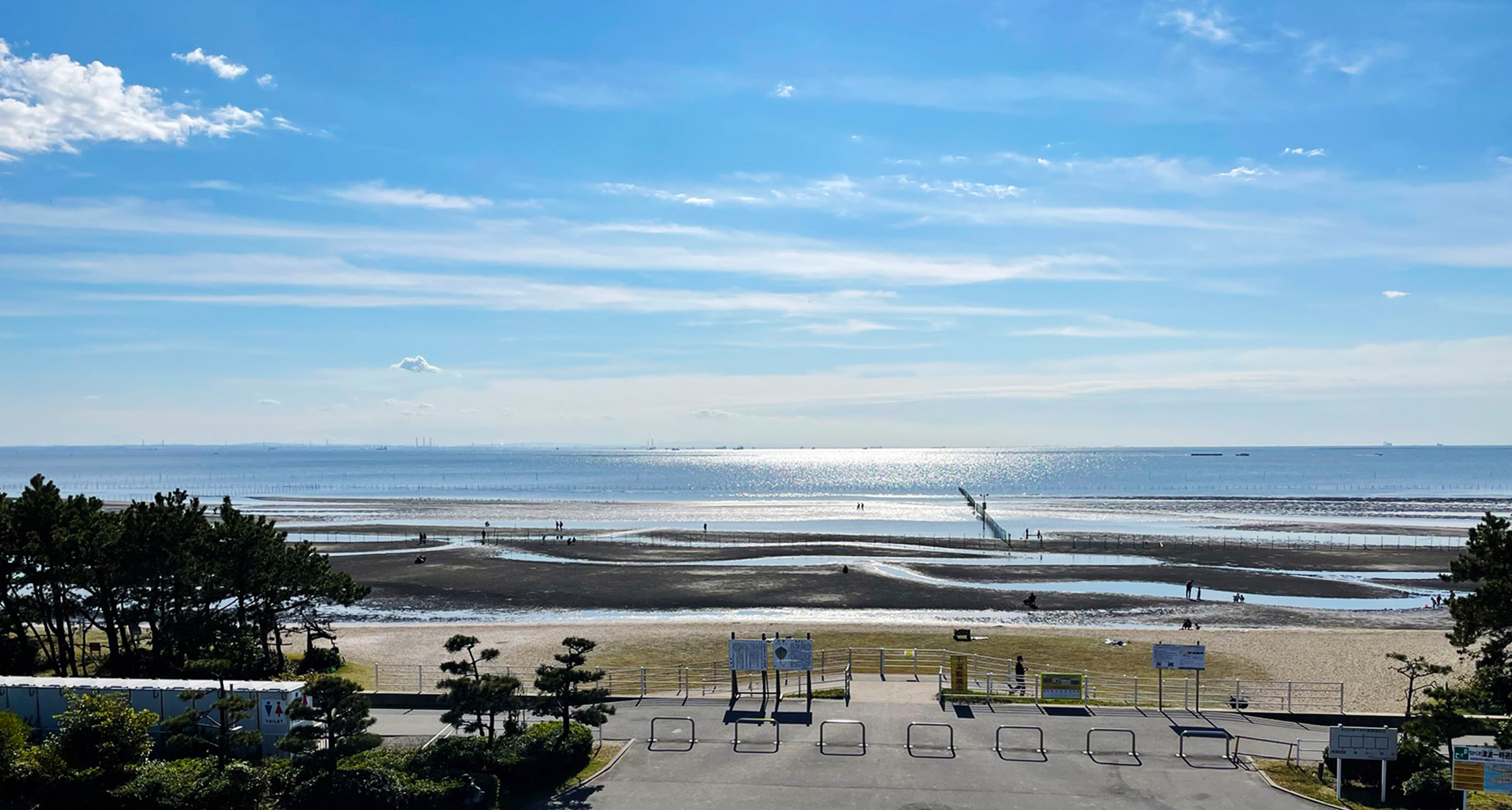Friendly Neighborhood Tidal Flat: Yatsu-higata
Our journey to Yatsu-higata began as just a normal day in Tokyo. We boarded a local train at Keisei Ueno Station, located just outside the massive JR Ueno Station. As it was a Saturday, our train car was filled with families with young children who were shouting out at each other on the train. 3 families all got off at the same stop, so Reiko san and I thought they might be attending some event.
It was a sleepy 55-minute train ride through residential districts (‘bedroom towns’ of Tokyo). As we were mainly traveling along the coast of the Tokyo-wan Bay, the view might have been quite impressive if not for the nearly unbroken rows of apartment complexes. Yatsu Station, located in Narashino City (Population of approximately 175,000) in northwestern Chiba Prefecture, is the kind of small, totally unremarkable local train station that you can find all over Japan.
When you walk out of Yatsu station you find: surprise, surprise, a shopping street (Anytime you get off a train station in Japan that does not have an adjacent shopping street you know you are really deep in the wilderness 😊)! While the shopping street is only a couple of blocks, it does have some cute, quirky stores mixed in with the national chain restaurants, and palm trees! As you leave the shopping street, the Yatsu Rose Garden stretches out in front of you [I was praying a tour wasn’t on the schedule and my prayers were answered! I am a hana yori dango (‘sweets rather than flowers’) guy. 😊]
The park situated alongside the Rose Garden was also a pretty commonplace suburban park. We walked along the main path for about 10 minutes, turned a corner, and suddenly Yatsu-higata appeared before us. My first impression of Yatsu-higata was ‘This shouldn’t be here!”. Yatsu-higata is a 40ha tidal flat that borders a residential area. It resembles a giant bowl with concrete sides, encircled by a highway with high rise apartments visible in the distance.
Yatsu-higata is one of the last survivors of what was formerly a long line of tidal flats facing the Tokyo-wan Bay. In many ways it is one of the most important natural conservation sites in Japan as it was preserved by the grassroots efforts of local residents who saved it from development or becoming a place to dump trash.
Yatsu-higata also boasts one of the largest and most active visitor centers among Ramsar sites, the Yatsu Higata Nature Observation Center. Relaxed and multi-layered, it was filled with local residents who view trips to the center as just part of their daily lives. We were there to take part in a special tidal flat observation event with local families. The enthusiastic center staff told me that I would soon be grabbing all sorts of benthic animals like crabs and holding worms. I smiled but had no intention of doing so…😊
However, when we walked out on the flat with our pails and spades, I found myself unexpectedly happy to see bubbles coming out the holes I dug, suggesting that small creatures were just below the surface. I let a worm crawl around in my hand for the first time in over 40 years (since my fishing days), and even let some tiny crabs scamper around in my palm (until I gave up after about 3 seconds). I was then immediately shamed to see a small girl: perhaps around 3 years old, fearlessly grab a crab 3 times the size of the ones I had briefly cradled and proudly hold up her discovery to her father.
All of the children were running around, frantically searching for larger crabs, worms or shellfish or comparing the size of their catches. I was most impressed when the guides told us to return all of captured animals to the locations we had found them. Thinking back to my days of running around barefoot in the mud and streams of Oklahoma, I thought, ‘This is how you teach ESD and biodiversity’. Even though Yatsu-higata is only a small tidal flat nestled in an urban area, it still offers simple pleasures.
James McGill



